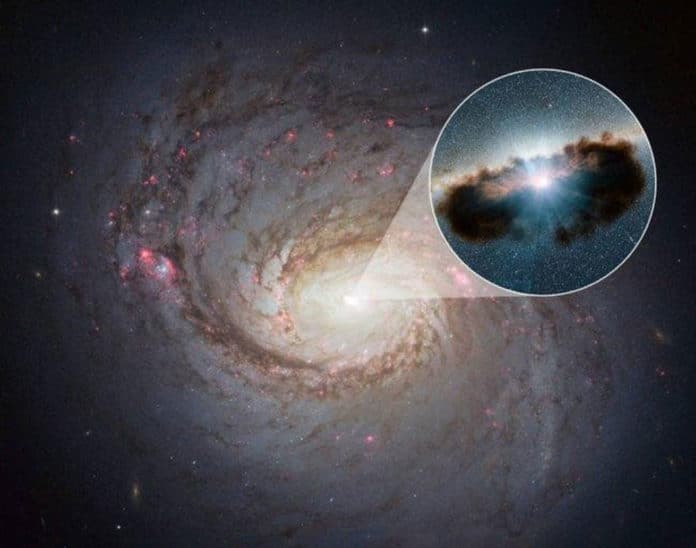Mysteries about the origin of high-energy cosmic neutrinos have deepened by the recent IceCube measurement of a large diffuse flux in the 10–100 TeV range.
Scientists at Penn State have devised a new model that could help explain the unexpectedly large flux of some of these neutrinos inferred by recent neutrino and gamma-ray data.
The model has suggested that the black holes at the center of galaxies are triggering these mysterious neutrinos.
Kohta Murase, assistant professor of physics and astronomy and astrophysics at Penn State and a member of Center for Multimessenger Astrophysics in the Institute for Gravitation and the Cosmos (IGC), who led the research said, “Neutrinos are subatomic particles so tiny that their mass is nearly zero and they rarely interact with other matter. High-energy cosmic neutrinos are created by energetic cosmic-ray accelerators in the universe, which may be extreme astrophysical objects such as black holes and neutron stars.”
“They must be accompanied by gamma rays or electromagnetic waves at lower energies, and even sometimes gravitational waves. So, we expect the levels of these various ‘cosmic messengers’ that we observe to be related. Interestingly, the IceCube data have indicated an excess emission of neutrinos with energies below 100 teraelectronvolts (TeV), compared to the level of corresponding high-energy gamma rays seen by the Fermi Gamma-ray Space Telescope.”
By combining all the available resources from all of these cosmic messengers, scientists wanted to learn about events in the universe and to reconstruct its evolution in the burgeoning field of multimessenger astrophysics.
For extreme cosmic events, like massive stellar explosions and jets from supermassive black holes that create neutrinos, this approach has helped astronomers pinpoint the distant sources, and each additional messenger provides additional clues about the details of the phenomena.
Murase said, “We know that the sources of high-energy neutrinos must also create gamma rays, so the question is: Where are these missing gamma rays? The sources are somehow hidden from our view in high-energy gamma rays, and the energy budget of neutrinos released into the universe is surprisingly large.”
“The best candidates for this type of source have dense environments, where their interactions with radiation and matter would block gamma rays, but neutrinos can readily escape. Our new model shows that supermassive black hole systems are promising sites, and the model can explain the neutrinos below 100 TeV with modest energetics requirements.”
According to the model, the Corona around supermassive black holes found at the core of galaxies could be such a source. Like Corona of the sun, astrophysicists believe that black holes have a corona above the rotating disk of material, known as an accretion disk, that forms around the black hole through its gravitational influence.
This Corona is extremely hot (with a temperature of about one billion degrees kelvin), magnetized, and turbulent. In this environment, particles can be accelerated, which leads to particle collisions that would create neutrinos and gamma rays. Still, the environment is dense enough to prevent the escape of high-energy gamma rays.
Murase said, “The model also predicts electromagnetic counterparts of the neutrino sources in ‘soft’ gamma-rays instead of high-energy gamma rays. High-energy gamma rays would be blocked, but this is not the end of the story. They would eventually be cascaded down to lower energies and released as ‘soft’ gamma-rays in the megaelectron volt range, but most of the existing gamma-ray detectors, like the Fermi Gamma-ray Space Telescope, are not tuned to detect them.”
In addition to Murase, the research team at Penn State includes the former IGC fellow Shigeo S. Kimura and Eberly Chair Professor Emeritus Peter Mészáros.
The Alfred P. Sloan Foundation, the U.S. National Science Foundation, the Japanese Society for the Promotion of Science, NASA, the Penn State Institute for Gravitation and the Cosmos, and the Eberly Foundation funded this work.
Journal Reference:
- Kohta Murase et al., Hidden Cores of Active Galactic Nuclei as the Origin of Medium-Energy Neutrinos: Critical Tests with the MeV Gamma-Ray Connection. DOI: 10.1103/PhysRevLett.125.011101
